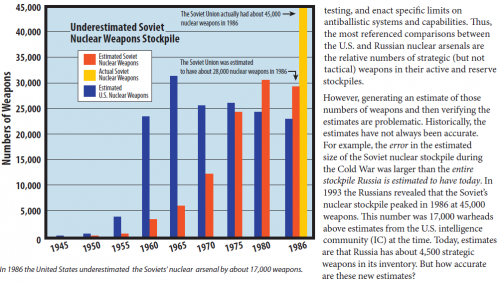- Joined
- 21 April 2009
- Messages
- 13,759
- Reaction score
- 7,700
There's an article I'll post later that shows how we underestimated the former USSRs nukes by 20,000 or so warheads. This was the most spied upon nation and most rigorous decadal study of military capabilities ever undertaken. Yet we were off by tens of thousands.Orionblamblam said:totoro said:And yes, China is also putting additional nukes/icbms in service while US is not. But the difference there is so huge that US can wait another decade or two, start increasing its arsenal only then and still be ahead of China.
Doesn't work that way. In ten, twenty years... who is the US going to have who knows how to manufacture nukes? What companies are we going to have that have the expertise, knowledge and *equipment* to manufacture nukes?
Complex items like nukes and ICBMs *must* be kept in more or less constant production or you lose the tribal knowledge and *tools* to make them, and you have to start from scratch. And if you start from scratch, how do you know the things will actually work? It's not like we're actually *testing* nukes anymore.
I truly believe this continued use of "China has only 300 warheads" given the size of their infrastructure allotted to nukes is wishful thinking at best and gross negligence and naivity at worst.

